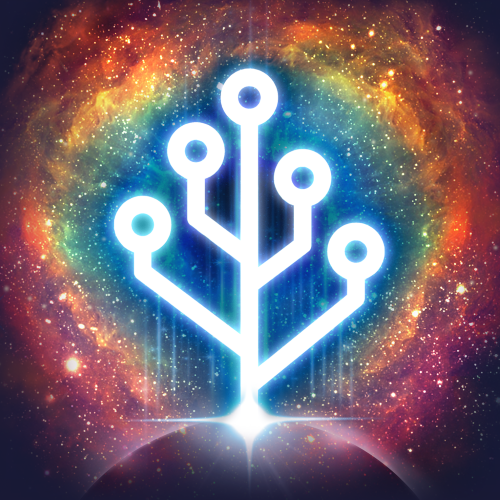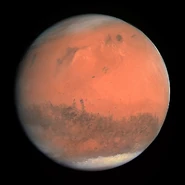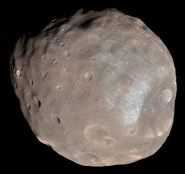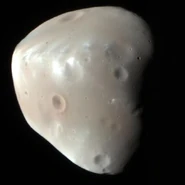Mars is the 5th Celestial Body and the 4th Terrestrial Planet obtained in The Beyond Bubble Universe, which can generate Stardust.
In-Game Description[]
"The fourth planet from the Sun and Earth's nearast neighbor, Mars is often called the Red Planet because of its ruddy color. It stands out brightly in the night sky, inspiring humans to wonder if it might be home to alien life."
Traits[]
Common[]
- Rusty Red (Speed):
"Mars gets its distinctive red color from iron oxide (also known as rust) on the planet's surface. Mars can be seen from Earth by the naked eye, and its color has been noted since ancient times."
- Seismic Activity (Payout):
"Much like Earth, Mars is seismically active. The planet experiences frequent "marsquakes" when the planet's rocky crust shifts and cracks. NASA's InSight probe recorded over 450 marsquakes in 2019."
Rare[]
- Solid Surface (Payout):
"All terrestial planets have a solid surface with a silicate mantle over a metallic core. Varying levels of seismic activity create mountains, canyons, craters, and volcanoes."
Epic[]
- Speed of Light (Speed):
"The speed of light is the rate at which light and all massless particles travel through a vacuum. While it can seen instantaneous from up close, over long distances this speed limit becomes very noticeable. The theory of relativity relates to the speed of light."
- Cosmic Gravity (Payout):
"Gravity is one of the fundamental forces and key to understanding how the universe works. Using Newton's principles, astronomers can explain how stars and planets form, predict their mass and motion, and infer the existence of dark matter."
- Goldilocks Zone (Discount):
"The Goldilocks Zone, also called the Habitable Zone, is the region around a star with conditions necessary for a planet that can sustain life. Planets like Earth, with surface water and breathable atmospheres, might be found in these zones in other systems."
Astronomy Mission[]
Mars's Astronomy Mission is its largest moon, Phobos.
Satellites[]
Mars has a total of two natural satellites, Phobos and Deimos.
Phobos[]
"The larger of Mars' two moons, Phobos is named for the Greek god of fear and panic. It has a very close orbit to Mars, and rises and sets twice in one Martian day. In the future, it may be torn apart by Mars' gravity."
Deimos[]
"Deimos is named for the Greek god of terror and dread and is the smaller of Mars' two moons. Like its brother satellite, Phobos, it is believed to be an asteroid that became caught in Mars' orbit."
Achievements[]
- Martian Manhunters (Rank 5):
"Many humans once believed that there were aliens on Mars, fueled by telescopic observations of distinctive surface features that looked like canals. Eventually, the first images taken of the planet's surface by spacecraft revealed it to be lifeless."
- Better Red Than Dead (Rank 10):
"To ancient humans, the appearance of Mars often signaled war, death, and destruction. Its red color indicated an ill omen for many cultures, and they believed it could portend bad luck or doom."
Real Image and Symbol[]
Sources[]
- Mars - Real image and symbol above taken
- Phobos - Real image above taken
- Deimos - Real image above taken
| | |
|---|---|
| |
Sun • Heliosphere • Alpha Centauri |
| |
Mercury • Venus • Earth • Mars |
| |
Moon • Io • Europa • Ganymede • Callisto • Titan • Enceladus • Triton |
| |
Asteroid Belt • Ceres • Vesta • Kuiper Belt |
| |
Jupiter • Saturn |
| |
Uranus • Neptune |
| |
Pluto • Haumea • Makemake • Eris |
| |
Shoemaker Levy 9 • Halley's Comet • Hale–Bopp |
| |
Sedna • Planet X • Hills Cloud • Oort Cloud |






